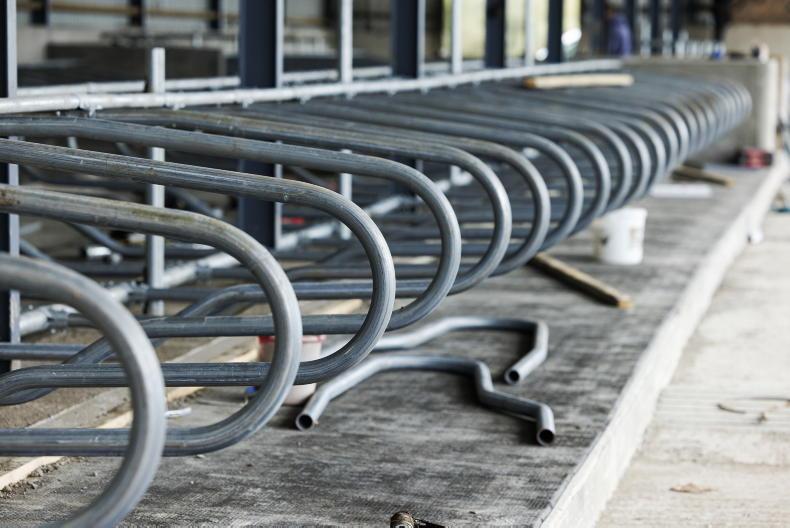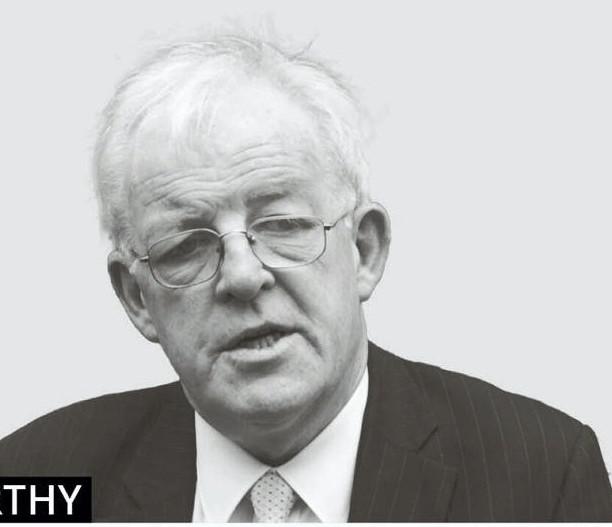The countdown is on. By the end of 2022, the Irish public will wave goodbye to KBC, which has been operating in this market for over 40 years. And hot on its heels’ in March 2023, will see the exit of Ulster Bank.
What does this mean for KBC and Ulster Bank customers? If you have your mortgage with either of these operators, technically you don’t have to do anything. An agreement is now in place in which Ulster Bank will sell all its performing mortgages to Permanent TSB while KBC is selling most of its mortgages to Bank of Ireland.
If you have a current account, however, you will have to switch to a new provider and sooner rather than later. KBC started contacting its customers at the start of June and they now have four months to make the switch, while Ulster Bank customers are writing to their customers on a phased basis in the coming months, to make the switch by March 2023. If the deadline approaches and you haven’t gotten a new current account sorted, then the banks will simply close your account and issue you with a cheque for your money. Given that most people have monthly direct debits in place to pay bills and subscriptions, this could leave you with quite the headache.
So it’s best to be organised and make the switch with plenty of time. However, it’s not just KBC and Ulster Bank account holders who should be surveying the market. With the increased cost of living, we all need to be getting the best deal from our bank accounts.
What’s involved?
Although switching car insurance and utility bills is something that many consumers do every year, switching bank accounts can be a more arduous task and therefore, is not done as regularly. The Central Bank has a switching code in place, which all banks must follow to make switching easier for consumers. In theory, it’s a good idea. In reality, it doesn’t run quite as smoothly. Daragh Cassidy, Head of Communications with Bonkers.ie says, “For most people, the best advice is to simply open up a new current account yourself online [which should take 15 minutes] and transfer over your direct debits and standing orders. Both Ulster Bank and KBC should be able to provide you with a detailed outline of all the payments on your account to help with this.
“You can set up new standing orders yourself online through your new bank’s online banking platform. Direct debits can usually be updated by ringing the relevant provider and providing them with your new account details.”
The best account
Before we start reviewing the costs associated with different current accounts, it’s worth observing the different players on the market. Our accompanying table details the current accounts available from some financial institutions who many are very familiar with; the likes of AIB, Bank of Ireland, EBS and Permanent TSB. An Post and local credit unions have also been offering financial services to the Irish public for decades.
However, in the last few years, some new players have entered the market, including N26 and Money Jar. Daragh Cassidy explains more.
“N26 and Money Jar are digital only banks and are completely legit,” he says.
“N26 now has over seven million customers worldwide, almost 200,000 of whom are in Ireland. It is licensed by the German Central Bank and operates in Ireland and other EU countries on a European Passport [a banking licence which allows a bank or financial institution which is licensed in one EU country to passport that licence to another country without having to get regulatory approval all over again]. Customers are covered by the German Deposit Guarantee Scheme up to €100,000 so your money is as safe with N26 as it is with any of the traditional Irish banks.
“Money Jar operates off the same model and is the first Irish owned digital current account. All funds are held by a Tier 1 state owned Irish bank, which is regulated by the Central Bank of Ireland. Founded in 2019, its headquarters are in Dublin, but it’s expanding throughout Europe.”
As both are digital banks, their online apps are very technologically advanced, especially compared to the apps offered by the more traditional banks. However, they do not have a bricks and mortar building where you can walk in to discuss your account or to withdraw or lodge money, everything is done online. Also, they do not offer the full suite of current account services such as overdraft facilities, cheque books or the ability to lodge cheques.
The best bank for you
With that in mind, the very best bank account is the one that suits your lifestyle best and while pricing varies, you need to ask, what am I getting for my money? Are you someone that prefers to have cash on you? If so, pay careful attention to ATM fees. Or are you a bit disorganised with your money? Then you need to research the amounts charged if an item goes unpaid as these fees can really add up.
Comparing prices, the banks with the highest quarterly fees are Bank of Ireland and Permanent TSB at €18, which over the course of a year amounts to €72. With Bank of Ireland though, you shouldn’t have any other surprises after that as there are no charges for withdrawals, unpaid items or other everyday banking services. This will really suit people who want to budget their banking charges and think no more of it. However, Permanent TSB customers need to make sure their account doesn’t fall into the red as if an item such as a direct debit is returned unpaid, you’ll be looking at a steep €10 penalty.
An Post and the MYCU Current Account in the Credit Union are coming in at €15 per quarter. With An Post, you’re also going to pay a cash withdrawal fee of 60c, which means you’ll need to plan ahead in terms of your trips to the ATM. The Credit Union also charge, but it depends on the credit union you’re with.
There is also a Credit Union current account, which is a little cheaper at €12, but you’re charged 50c per cash withdrawal (although you get five free per month so plan them wisely). But if you’re not organised, they will also charge you €10 for an unpaid item.
AIB has run into a lot of controversy in recent months when they announced the withdrawal of cash services from 70 of its branches, which they quickly had to reverse given the huge amount of negative feedback from both their customers and the wider public. This is obviously the direction they want their business to take though and although we suspect changes won’t be quite so drastic in the future, it is a consideration if you choose to bank with them. This is an account where you have to be careful about fees and your banking habits. Their quarterly fee may be amongst the lowest at €4.50, but they are going to charge 20c for every direct debit and debit card transaction as well as 35c for an ATM withdrawal. Unpaid items are also €10.
EBS offers one of the most competitive rates on the market with no monthly fees and one of the few things you need to watch out for is a €6.35 fee for unpaid items, but this is still a reduced rate compared to some of its competitors.
N26 also puts its best foot forward with no monthly fees and no direct debit fees, but as a digital bank, that’s exactly the way they want you to bank-digitally. You’ll get three free cash withdrawals every month, but after that it’s a whopping €2 per withdrawal. You wouldn’t want to abide by the “cash is king” motto if you choose them as your bank. Unpaid items are €3.
Finally, Money Jar may be one of the newest banks on the market, but they have taken the bold step to charge for contactless payments, adding an extra 3c every time you tap. Contactless payment has become such a part of our everyday life, so it’s one of the charges that is most likely to irk consumers. However, now that one is out of the trap, expect more to follow. Money Jar also have a quarterly fee of €8.97, direct debit fees of 35c, a cash withdrawal fee of 99c and unpaid fees of €2.99.
What about Revolut?
Given there are 1.9 million Revolut customers in Ireland, you may be wondering why they haven’t been included in our analysis.
Revolut is considered the big disruptor in this “new age” of banking. Features that are really valued by consumers include easy transfer of money to friends and setting up vaults where you can budget your money into accounts for the month (excellent for budgeting your monthly food shop for example).
They started out as an e-money account, operating with an e-money license from Lithuania. And in March of this year, it announced that it had officially launched as a bank in Ireland. However, there are still a few glitches in the system. Daragh Cassidy explains, “Revolut was authorized by the European Central Bank earlier this year. They didn’t go as far as getting the Irish Central Bank authorization, which means they don’t have an Irish IBAN code. Revolut customers in Ireland have a LT code [Lithuania] at the start of their IBAN number, rather than an IE number.
“This means that consumers can run into difficulties when setting up their pay [salary] to go into the account or direct debits for bills. It is possible but just a bit complicated at the moment.
“We suspect as these glitches get ironed out and the process gets simpler in the coming months, more and more people will look towards Revolut for their current account. Remember they are only a registered bank here in Ireland since earlier this year, it’s still early days and for the moment, most Irish consumers continue to have a current account and transfer money from that into their Revolut in order to utilise the perks of the app.”
Read more
Consumer- Back to School costs
Consumer- five steps to help clear your credit card debt
The countdown is on. By the end of 2022, the Irish public will wave goodbye to KBC, which has been operating in this market for over 40 years. And hot on its heels’ in March 2023, will see the exit of Ulster Bank.
What does this mean for KBC and Ulster Bank customers? If you have your mortgage with either of these operators, technically you don’t have to do anything. An agreement is now in place in which Ulster Bank will sell all its performing mortgages to Permanent TSB while KBC is selling most of its mortgages to Bank of Ireland.
If you have a current account, however, you will have to switch to a new provider and sooner rather than later. KBC started contacting its customers at the start of June and they now have four months to make the switch, while Ulster Bank customers are writing to their customers on a phased basis in the coming months, to make the switch by March 2023. If the deadline approaches and you haven’t gotten a new current account sorted, then the banks will simply close your account and issue you with a cheque for your money. Given that most people have monthly direct debits in place to pay bills and subscriptions, this could leave you with quite the headache.
So it’s best to be organised and make the switch with plenty of time. However, it’s not just KBC and Ulster Bank account holders who should be surveying the market. With the increased cost of living, we all need to be getting the best deal from our bank accounts.
What’s involved?
Although switching car insurance and utility bills is something that many consumers do every year, switching bank accounts can be a more arduous task and therefore, is not done as regularly. The Central Bank has a switching code in place, which all banks must follow to make switching easier for consumers. In theory, it’s a good idea. In reality, it doesn’t run quite as smoothly. Daragh Cassidy, Head of Communications with Bonkers.ie says, “For most people, the best advice is to simply open up a new current account yourself online [which should take 15 minutes] and transfer over your direct debits and standing orders. Both Ulster Bank and KBC should be able to provide you with a detailed outline of all the payments on your account to help with this.
“You can set up new standing orders yourself online through your new bank’s online banking platform. Direct debits can usually be updated by ringing the relevant provider and providing them with your new account details.”
The best account
Before we start reviewing the costs associated with different current accounts, it’s worth observing the different players on the market. Our accompanying table details the current accounts available from some financial institutions who many are very familiar with; the likes of AIB, Bank of Ireland, EBS and Permanent TSB. An Post and local credit unions have also been offering financial services to the Irish public for decades.
However, in the last few years, some new players have entered the market, including N26 and Money Jar. Daragh Cassidy explains more.
“N26 and Money Jar are digital only banks and are completely legit,” he says.
“N26 now has over seven million customers worldwide, almost 200,000 of whom are in Ireland. It is licensed by the German Central Bank and operates in Ireland and other EU countries on a European Passport [a banking licence which allows a bank or financial institution which is licensed in one EU country to passport that licence to another country without having to get regulatory approval all over again]. Customers are covered by the German Deposit Guarantee Scheme up to €100,000 so your money is as safe with N26 as it is with any of the traditional Irish banks.
“Money Jar operates off the same model and is the first Irish owned digital current account. All funds are held by a Tier 1 state owned Irish bank, which is regulated by the Central Bank of Ireland. Founded in 2019, its headquarters are in Dublin, but it’s expanding throughout Europe.”
As both are digital banks, their online apps are very technologically advanced, especially compared to the apps offered by the more traditional banks. However, they do not have a bricks and mortar building where you can walk in to discuss your account or to withdraw or lodge money, everything is done online. Also, they do not offer the full suite of current account services such as overdraft facilities, cheque books or the ability to lodge cheques.
The best bank for you
With that in mind, the very best bank account is the one that suits your lifestyle best and while pricing varies, you need to ask, what am I getting for my money? Are you someone that prefers to have cash on you? If so, pay careful attention to ATM fees. Or are you a bit disorganised with your money? Then you need to research the amounts charged if an item goes unpaid as these fees can really add up.
Comparing prices, the banks with the highest quarterly fees are Bank of Ireland and Permanent TSB at €18, which over the course of a year amounts to €72. With Bank of Ireland though, you shouldn’t have any other surprises after that as there are no charges for withdrawals, unpaid items or other everyday banking services. This will really suit people who want to budget their banking charges and think no more of it. However, Permanent TSB customers need to make sure their account doesn’t fall into the red as if an item such as a direct debit is returned unpaid, you’ll be looking at a steep €10 penalty.
An Post and the MYCU Current Account in the Credit Union are coming in at €15 per quarter. With An Post, you’re also going to pay a cash withdrawal fee of 60c, which means you’ll need to plan ahead in terms of your trips to the ATM. The Credit Union also charge, but it depends on the credit union you’re with.
There is also a Credit Union current account, which is a little cheaper at €12, but you’re charged 50c per cash withdrawal (although you get five free per month so plan them wisely). But if you’re not organised, they will also charge you €10 for an unpaid item.
AIB has run into a lot of controversy in recent months when they announced the withdrawal of cash services from 70 of its branches, which they quickly had to reverse given the huge amount of negative feedback from both their customers and the wider public. This is obviously the direction they want their business to take though and although we suspect changes won’t be quite so drastic in the future, it is a consideration if you choose to bank with them. This is an account where you have to be careful about fees and your banking habits. Their quarterly fee may be amongst the lowest at €4.50, but they are going to charge 20c for every direct debit and debit card transaction as well as 35c for an ATM withdrawal. Unpaid items are also €10.
EBS offers one of the most competitive rates on the market with no monthly fees and one of the few things you need to watch out for is a €6.35 fee for unpaid items, but this is still a reduced rate compared to some of its competitors.
N26 also puts its best foot forward with no monthly fees and no direct debit fees, but as a digital bank, that’s exactly the way they want you to bank-digitally. You’ll get three free cash withdrawals every month, but after that it’s a whopping €2 per withdrawal. You wouldn’t want to abide by the “cash is king” motto if you choose them as your bank. Unpaid items are €3.
Finally, Money Jar may be one of the newest banks on the market, but they have taken the bold step to charge for contactless payments, adding an extra 3c every time you tap. Contactless payment has become such a part of our everyday life, so it’s one of the charges that is most likely to irk consumers. However, now that one is out of the trap, expect more to follow. Money Jar also have a quarterly fee of €8.97, direct debit fees of 35c, a cash withdrawal fee of 99c and unpaid fees of €2.99.
What about Revolut?
Given there are 1.9 million Revolut customers in Ireland, you may be wondering why they haven’t been included in our analysis.
Revolut is considered the big disruptor in this “new age” of banking. Features that are really valued by consumers include easy transfer of money to friends and setting up vaults where you can budget your money into accounts for the month (excellent for budgeting your monthly food shop for example).
They started out as an e-money account, operating with an e-money license from Lithuania. And in March of this year, it announced that it had officially launched as a bank in Ireland. However, there are still a few glitches in the system. Daragh Cassidy explains, “Revolut was authorized by the European Central Bank earlier this year. They didn’t go as far as getting the Irish Central Bank authorization, which means they don’t have an Irish IBAN code. Revolut customers in Ireland have a LT code [Lithuania] at the start of their IBAN number, rather than an IE number.
“This means that consumers can run into difficulties when setting up their pay [salary] to go into the account or direct debits for bills. It is possible but just a bit complicated at the moment.
“We suspect as these glitches get ironed out and the process gets simpler in the coming months, more and more people will look towards Revolut for their current account. Remember they are only a registered bank here in Ireland since earlier this year, it’s still early days and for the moment, most Irish consumers continue to have a current account and transfer money from that into their Revolut in order to utilise the perks of the app.”
Read more
Consumer- Back to School costs
Consumer- five steps to help clear your credit card debt










SHARING OPTIONS